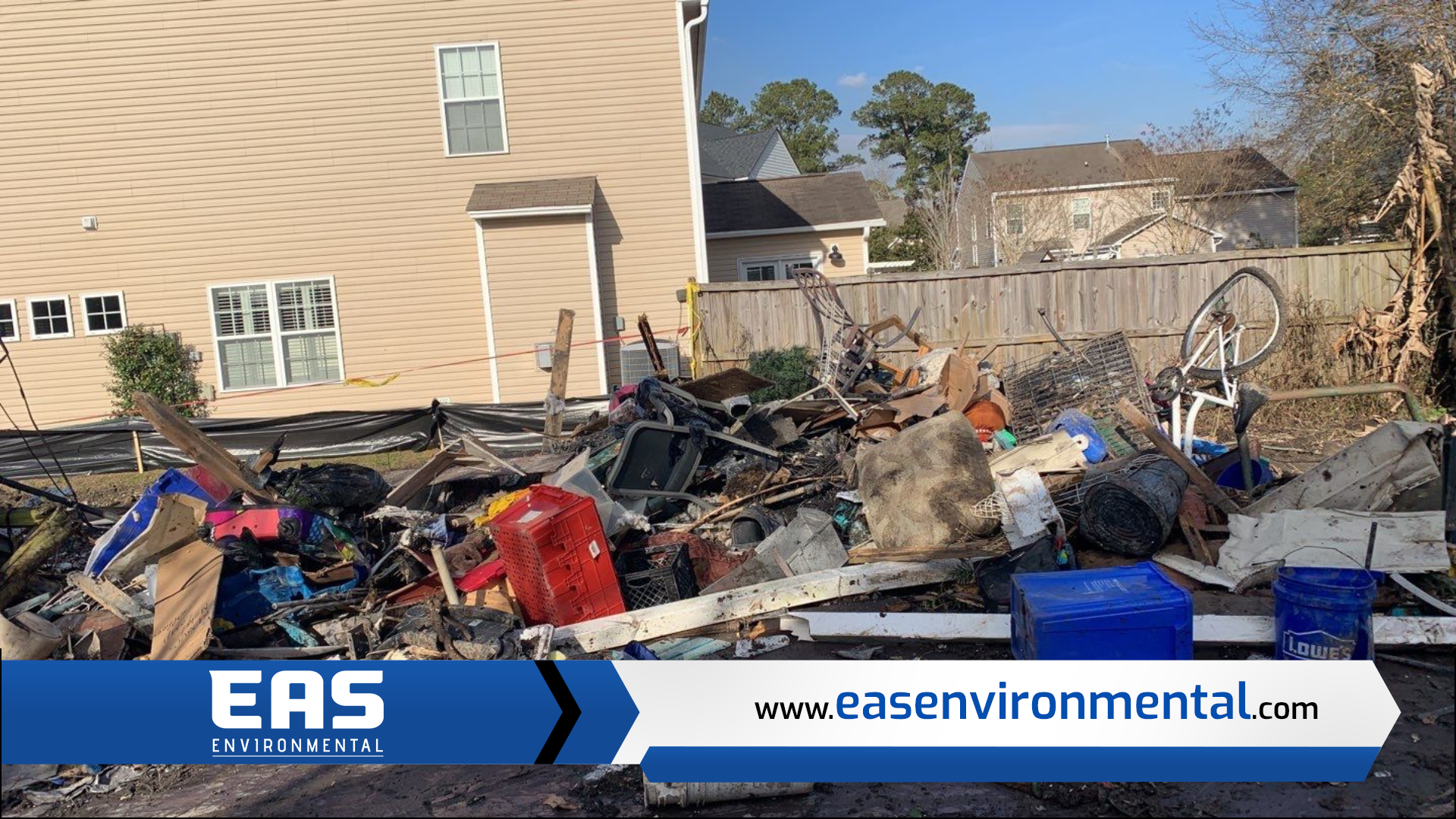
If you're an ambitious homeowner with a vision for your house's future, then you might be considering exterior demolition as the first step in your renovation. But where do you start? How much work is involved? Don't worry! We've got you covered with this guide to the basics of exterior demolition.
Assessing the Risk Level
Before you start anything, you need to assess the risk level of exterior demolishing your home. Depending on a variety of factors such as age, size, and location of your property, there could be hazardous materials present that require special handling or disposal. Make sure to take an inventory of any hazardous materials before beginning any demolition work. Additionally, take any necessary safety precautions to protect yourself from potential risks like dust inhalation or electrocution. If in doubt, consult with a professional contractor for advice!
Selecting the Right Tools
Now that you know what kind of risks are involved in exterior demolishing your home, you need to select the right tools for the job. For instance, if you plan on removing siding and flooring from your home's exterior walls and roof decking respectively, make sure to invest in good quality pneumatic nailers. On the other hand, if you plan on tearing down an entire wall or structure, heavy-duty demolition hammers and power saws will be necessary. Again—if in doubt, ask a professional contractor for advice!
The Importance Of Proper Disposal
Once your demolition is complete (and after taking one last step back to admire your work!), it's time to start cleaning up! No matter what type of material was used in your home's previous structure—wood beams or metal studs—proper disposal is a must. You don't want hazardous materials lingering around; they pose a serious threat to people's health and well-being! So make sure that debris is disposed of properly by following local regulations and guidelines for waste removal in your area.
What is exterior demolition?
Simply put, exterior demolition is the act of tearing down or dismantling structures with tools such as hammers and chisels. It includes everything from taking apart walls to removing entire buildings. Professional demolition crews have the expertise necessary to ensure that all safety protocols are followed during the project. This means they know how to use specialized equipment like cranes and bulldozers to avoid any potential hazards.
Demolition Process
The exterior demolition process begins with an evaluation by a qualified engineer or contractor who will assess the condition of the structure and determine which type of equipment should be used for the job. After that, structural components such as floors, walls, ceilings, and roofs must be removed using specialized tools like saws and drills. Finally, any remaining debris must be disposed of properly following local regulations.
Why Exterior Demolition is Necessary
Exterior demolition can be necessary for a variety of reasons including building renovations or expansions or for demolishing old buildings to make way for new ones. In some cases, it may even be required by law if a structure has become structurally unsound due to age or natural disasters such as tornadoes or earthquakes. Whatever the reason may be, you must hire a professional team to handle the job safely and efficiently.
What are the benefits of exterior demolition?
Exterior demolitions offer several advantages when you’re looking to spruce up your home. One advantage is that you can get rid of any rotten wood, cracked surfaces, or moldy areas on the outside of your home that can cause further damage if left untreated. By getting rid of these problem areas now, you can save yourself from potentially costly repairs in the future.
Another benefit is that exterior demolition can increase the value of your property. If you want to make an impact with potential buyers or renters, tearing down and starting over with new materials will give them a better idea as to what they could do with their own space if they move in. It also allows them to see how creative they could get by adding their design touches such as siding colors and trim pieces.
Finally, exterior demolition can help reduce energy costs as well! By replacing outdated windows and doors with newer models, you can significantly reduce air infiltration which in turn leads to lower energy bills throughout the year. Not only will this save you money in the long run but it will also help keep your family comfortable in all types of weather conditions!
What are some of the hazards of exterior demolition?
Noise Pollution
Exterior demolition projects can be extremely noisy. Not only is this irritating, but it can also be dangerous for your neighbors and yourself. To protect yourself from noise pollution, invest in protective headphones and earplugs before starting the project. Additionally, make sure to check local ordinances about noise levels in residential areas before beginning your demolition project.
Airborne Particles
When performing an exterior demolition project, there will inevitably be airborne particles that float around in the air. This can include dust, dirt, and other debris that may not be visible to the naked eye. These particles can cause respiratory issues if inhaled for extended periods, so make sure to use protective masks at all times during the job. Additionally, try using a wet saw when cutting through materials as this will help reduce particle dust significantly.
Collapse Hazards
The structure that is being demolished may not always be stable or structurally sound enough to support its weight which could lead to collapse hazards during the demolition process. To help prevent this from happening, make sure you are aware of any weak spots in the structure before beginning your project and take steps accordingly to stabilize them if needed. Additionally, always wear protective clothing such as gloves and safety glasses when performing any exterior demolitions as these can help protect you from flying debris or collapsing structures.
What are the first steps to exterior demolition?
Plan Ahead
The most important step for any successful project is planning. This means researching to make sure that all necessary permits are obtained and that any potentially hazardous materials (such as asbestos) are taken care of beforehand. Additionally, it's important to have a plan for disposing of debris after the demolition process is complete. Once all of this has been taken care of, you can begin working on the actual demolition process.
Start Small
When it comes time to begin demolishing, it's best to start small and work your way up from there. Begin by removing smaller items like window treatments or trim before proceeding to larger items such as walls or roofs. This will allow you to get accustomed to the process and familiarize yourself with any potential safety hazards before taking on bigger tasks. Additionally, starting small will help ensure that the project stays within budget by not tackling too many large-scale tasks at once.
Safety First!
No matter how big or small your project is, safety should always be your top priority when it comes to exterior demolition. Make sure that all power sources are disconnected before beginning work and wear appropriate safety gear like gloves, goggles, and hard hats while working around falling debris or sharp surfaces. Also, consider renting special tools like jackhammers or backhoes to minimize potential risk during the more difficult parts of the job.
How do I choose a reputable contractor?
Finding a reputable exterior demolition contractor can be a daunting task. It’s often difficult to tell the difference between a good contractor and one who will leave you high and dry with an unfinished project.
Do Your Research
Once you’ve found a few names of contractors in your area, it’s time to do some digging. Start by asking friends and family members if they have ever used the contractor in question. Word of mouth is invaluable when it comes to finding contractors, as it gives you insight into their previous work and customer service. If that isn't available, check online reviews on sites like Yelp or Angie's List to get an idea of what others’ experiences were like working with the contractor.
Get Several Bids
Having multiple bids allows you to compare services and prices side-by-side so that you can make an informed decision about which contractor is right for your job. When getting bids, be sure that each bid includes all labor costs, materials, estimated completion date, projected progress payments, references from past clients, proof of insurance coverage, and any other pertinent information regarding the job at hand. Once you have several estimates in hand, deciding on a contractor should be much easier!
Check Out Their Portfolio
Once you have all of the necessary paperwork squared away, it’s time to check out their portfolio! This will give you an idea of what kind of projects they’ve taken on before and how successful they were with them. Pay attention not only to the finished product but also to how quickly they completed those projects – this will help give you an indication of how long yours might take as well as how well they manage their time. Finally, make sure that their portfolio reflects projects similar in scope and size to yours; if it doesn’t then it might be best to look elsewhere!
How do I safely dispose of the demolition debris?
If you’ve recently tackled a renovation project in your home, you may be facing a mountain of demolition debris. After all the hard work you’ve put in to improve your home, don’t let that debris ruin all your progress.
Have a Plan for Your Demolition Debris
When planning for your renovation, don’t forget to plan for disposing of the demolition debris! Start by asking yourself these questions: What materials are present? What is salvageable? Is there any hazardous material or waste? Knowing this information will help you determine the best way to dispose of your demolition debris.
Find Out About Local Disposal Regulations
Before doing anything else with your demolition debris, check with local regulations. Many areas have requirements about what can and cannot be disposed of in landfills. These regulations also provide guidelines regarding disposal fees and methods. Knowing this information ahead of time can save you time, money, and hassle when it comes time to get rid of that pile of rubble!
Hire a Professional Removal Service
The safest way to dispose of demolition debris is often to hire a professional removal service. This option eliminates risks such as injury from heavy lifting or improperly handling hazardous materials. Plus, professional services are usually equipped with proper tools and techniques for safe and efficient disposal. If hiring a professional isn't an option, consider renting a dumpster instead—much safer than piling everything into the backseat of your car!
Conclusion
As thrilling as exterior demolishing can be at first glance, many things must be taken into consideration before jumping into this project headfirst. Assess potential risk levels associated with hazardous materials present at the site before beginning any demolition work; select suitable tools for each task; ensure proper disposal of debris according to local regulations afterward. With these tips in mind, you're well-equipped with everything needed for a safe and successful exterior demolition project! Good luck out there!
Contact EAS Environmental Today!
EAS Environmental will do everything we can to ensure your experience with us is excellent.
Request A FREE Estimate
Request a Free Estimate Form
Checkout Recent Post




Got a Question? We’re Here to Help.
You can arrange an appointment or make an enquiry by phone or email, orget in touch to us via our contact form.

